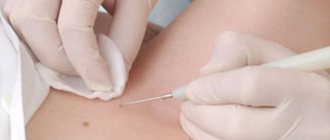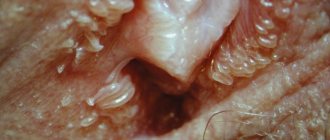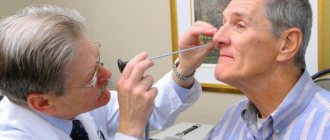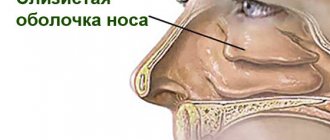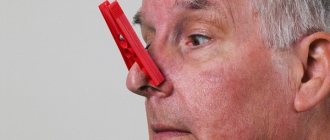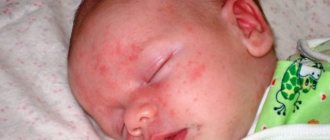Papilloma is characterized by a benign formation. The appearance of a tumor in the nose is caused by the human papillomavirus.
HPV may not manifest itself for a long time and remain dormant in the body. It is capable of becoming more active when the immune system is low and against a background of stress. To get rid of papilloma, they resort to removing the formation through surgery, after which the patient needs antiviral and immunotherapy.
Causes of nasal papillomas
For a long time, doctors could not determine the exact cause of papilloma in the nose, but today it is known that, according to its etiology, this disease belongs to viral diseases that are caused by papillomavirus.
The method of transmission of the human papillomavirus is sexual and household contact. It is possible for a child to become infected from the mother while passing through the birth canal. Then laryngeal (larynx is affected) and anogenital papillomatosis of newborns are diagnosed. Self-infection should also not be ruled out when a patient independently transfers the virus from one part of the body to another during shaving or other hygiene procedures.
About 80% of all inhabitants of the Earth are infected with this virus, but very often the carriers themselves do not know about it. The virus can remain in the body for decades and not manifest itself clinically as long as the person maintains a high immune status. With the slightest malfunction of the immune system, small tumors on a stalk can appear in any part of the body.
The following factors can provoke activation of the virus:
- insufficient intake of vitamins and microelements;
- hormonal imbalance;
- alcohol and nicotine addiction;
- the presence of foci of chronic infection in the body;
- frequent colds;
- dampness and moisture in the living room.
Anyone can become infected with the papilloma virus, regardless of age and gender. Doctors note the seasonality of the disease - the spring-autumn period, when the body is weakened by changing weather conditions and a lack of vitamins in food.
Types and danger of papillomas
The most commonly diagnosed types of nasal papilloma are:
- squamous;
- invertible.
What is squamous cell papilloma and what is its difference, many patients wonder. This type of wart is characterized by rapid growth, a tendency to malignancy (transition from a benign to a malignant form), and germination not only into other layers of the skin, but also into the bone. Most often, this type of neoplasm is diagnosed on the wall of the nasal cavity.
Warts can be of different types, shapes, and colors. This depends on the type (strain) of the virus that caused the growth.
The peculiarity of inverted papillomas is that they are more common in older patients with chronic diseases of the ENT organs (rhinitis, sinusitis, sinusitis). They look like a growth on a leg. A sharp increase in the size of the papilloma, difficulty breathing, and bleeding from the neoplasm should be a reason to immediately contact a medical facility.
Where can they be located?
A growth inside the nasal cavity and a papilloma on the nose are found equally often. Let's look at different cases and their reasons:
- Under the nose, papillomas most often occur after self-infection during shaving or a prolonged runny nose. They can have different shapes and sizes, in most cases they cause breathing problems and cosmetic defects.
- Round growths are usually localized at the tip of the nose, which can reach large sizes, causing a lot of inconvenience to the patient.
- Peaked papillomas most often occur on the nasal septum, which, in the absence of adequate therapy, can develop into a malignant form. When cleaning the nose, they are injured, can bleed, cause swelling of the mucous membrane and difficulty breathing.
- In anticipation of the nasal cavity, papillomas often appear after a severe cold or allergy, when a prolonged runny nose becomes the cause of self-infection.
- In the sinus and maxillary sinuses of the nose, growths of various shapes and sizes appear as a complication after chronic sinusitis or sinusitis.
The location, size and shape of the papilloma determine the clinical picture of the disease, as well as the transition from a benign to a malignant form. The fact is that with frequent trauma to the growth, malignancy occurs much more often.
Treatment options
The treatment method for papillomas involves step-by-step surgical removal of tumors, after which the immune system is corrected and the virus is fought. Surgical treatment can be of several types:
- Electrocoagulation and liquid nitrogen - cauterization and freezing of the body of the papilloma makes it impossible for it to continue to exist as an independent neoplasm. The procedure requires preliminary anesthesia, and its effectiveness is noted only in the presence of single growths.
- Endoscopic surgery - an endoscope is inserted into the location of the wart, after which it is excised, cauterized with a laser to prevent bleeding. The wound site is treated with an antiviral agent.
- Radical surgery - part of the nose or jaw is removed, provided that the papilloma has grown into the cartilage and bone tissue. Used extremely rarely.
Drug therapy involves the use of the following groups of drugs:
- Antiviral agents - their action is aimed at inhibiting viral cells. Panavir and Vartotsid are used.
- Immunomodulators – stimulate the activity of the immune system, which increases the body’s resistance to the virus. Anaferon, Viferon, Cycloferon are prescribed.
- Vitamins A, B, C, E, which accelerate metabolic processes in the body and stimulate accelerated regeneration of damaged cells.
If the traditional regimen for the treatment of nasal papillomas does not give the desired effect, radiation therapy is prescribed. When exposed to radiation, the virus dies, but the body also suffers significant losses. After radiation therapy, dangerous consequences develop, but sometimes this method of treatment is the only way out.
Self-medication is excluded, since eliminating papilloma does not mean killing the virus. The problem needs to be addressed in a comprehensive manner, otherwise there is a high risk of the situation worsening and the cells degenerating into a cancerous tumor.
Growths in children
Doctors rarely detect papillomas in young children. Children of older preschool and school age who attend sports clubs, swimming pools and other places where contact with patients is possible are more susceptible to this disease. A large number of contact persons and a humid environment contribute to the rapid penetration of the virus into the body.
If a child has a papilloma in his nose, parents should definitely consult a doctor to determine the type of tumor and develop treatment tactics. Under the influence of the virus, epithelial cells multiply very quickly, forming small neoplasms on the mucous membrane and skin, which can not only cause complexes about appearance, but also cause serious illnesses in the future.
Regarding the removal of papillomas in children and adults, the opinion of doctors is ambiguous. Some argue that growths must be removed immediately after detection, while other experts are confident that it is necessary to take an individual approach to the treatment of each patient and resort to radical methods only in cases where conservative therapy has not had the desired effect.
Surgery
Papillomas can be removed in different ways. The option is selected individually each time. The specific type of surgery depends on the location of the wart. The method of cryodestruction is often used. In this case, the papilloma is strongly cooled using liquefied nitrogen. But this option cannot be used for a pointed type of tumor.
Laser removal is also a popular method. This method is absolutely painless and effective and leaves no marks on the skin.
Electrocoagulation is the removal of growths using current pulses. This method is used if the papilloma is large.
When other methods cannot be used, they resort to a radio knife. The consequence is that after such an operation scars will remain.
It is necessary to provide proper wound care after the procedure. It depends on how exactly the papilloma was removed. After the radioknife, a special ointment is usually used. The wound should be washed with soapy water.
After the laser, crusts remain on the skin. After some time, they will disappear on their own, but even in this case it is necessary to use ointments. If these scabs are torn off, scars will remain.
Symptoms
Nasal papilloma is most often discovered during hygienic cleaning of the nasal cavity. This is the problem of early diagnosis, because clinical symptoms are often absent until the growth increases several times in size.
If alarming symptoms appear, you should immediately consult a doctor. Remember that nasal papillomas can degenerate into malignant neoplasms in the absence of adequate therapy.
After a large papilloma grows in the nose, the patient may complain of:
- difficulty breathing due to growths in the nose, which may be accompanied by loss of respiratory function in the affected nostril;
- constant discharge and bleeding in the nasal cavity that appears during hygiene procedures;
- loss of smell and sensitivity in the nasolabial triangle;
- hearing impairment;
- frequent lacrimation, which is provoked by intranasal warts;
- swelling of the nasal mucosa;
- frequent causeless headaches.
If such symptoms appear, you should urgently seek medical help.
Diagnostics
Many patients wonder which doctor to see if papilloma appears in the nose. Papillomatosis is most often treated by a dermatologist. But, taking into account the specifics of the localization of the growth and the clinical picture, it is best to contact an ENT specialist, who will prescribe a set of necessary studies:
- examination of the growth, determining its shape, structure, attachment to the mucous membrane;
- taking a general blood test;
- PCR analysis to determine viral DNA;
- digene rapid test;
- biopsy of papilloma tissue for histological examination.
Only after a complete examination and interpretation of the results obtained, the doctor will be able to choose the most effective and safe method for removing papilloma.
How to remove papilloma in the nose
Treatment of nasal papilloma should be carried out comprehensively, that is, include various methods. Conservative methods of therapy are most often used. In addition to mechanical removal of growths, it is necessary to act directly on the cause of the disease by strengthening the immune system.
It is impossible to completely remove the virus from the body, but by increasing immune defense and taking antiviral drugs, it is possible to prevent the multiplication of viral particles. If conservative therapy is insufficiently effective, doctors may recommend surgical treatment.
There are several ways to radically remove a tumor:
- surgical;
- laser;
- radio waves;
- electrocoagulating;
- by freezing (cryodestruction);
- chemical
Radical removal
Removal of papillomas in the nose should be carried out in a hospital setting under the supervision of medical personnel who know what to do if unexpected complications arise in the form of bleeding, swelling or inflammation.
If the growth is located in the vestibule of the nasal cavity, then you can get rid of it using one of the modern methods based on tissue destruction. This may be the use of liquid nitrogen, chemical solutions, lapis pencil, antiviral ointments.
If the tumor is located inside the nasal cavity, then removal is carried out surgically or laser, using endoscopic techniques. After the operation, the patient should remain under the supervision of a doctor for some time. The main concern is relapse of the disease. Moreover, very often, in place of one removed papilloma, several grow. Here, conservative treatment should be aimed at preventing re-exacerbation.
Drug therapy
There are many options for how to get rid of papillomas at home. However, self-medication may have adverse effects on the patient's health. Therefore, treatment of the disease is best carried out under the supervision of highly qualified medical personnel.
The conservative treatment method aims to strengthen and stimulate the immune defense and influence the virus itself. Considering that papillomas often recur, after their radical removal it is necessary to take preventive courses 2 times a year, during the off-season, including:
- vitamin and mineral complexes;
- natural immunomodulators (echinacea, rhodiola);
- antiviral drugs (interferon, novirin, amiksin, oxolinic ointment).
The exact dose of the drug and duration of its use will be determined by the attending physician, taking into account the severity of the disease.
Folk remedies
To get rid of papillomas at home, you can treat with folk remedies, the action of which is aimed at strengthening the body's defenses. For this purpose it is recommended to use:
- echinacea tincture;
- decoctions of antiseptic and restorative herbs (chamomile, calendula, nettle);
- tea or fruit drink made from viburnum berries.
At an early stage of the disease, a growth located on the outside of the nose can be eliminated with the help of celandine juice, which must be used to lubricate the growth. Before using folk remedies, you need to make sure that the growth is benign.
Folk recipes
Treatment of papilloma can be carried out using traditional methods. Golden mustache leaves will help get rid of the tumor. Every day for a week you need to apply the pulp to the papilloma.
Juices from cabbage, calendula, rowan, celandine and nettle are also used. You need to make a compress out of them. Lotions should be applied 3-4 times a day.
Regular chalk can also help solve the problem. It should be ground into dust and applied regularly to new growths. This must be done for a month.
In addition, to treat papilloma you can use:
- Infusion of wormwood.
- A mixture of onion juice and natural honey.
- Sour cream with salt.
- Chopped figs.
- Tomatoes minced in a meat grinder.
People have been treated with traditional methods for centuries. But it would still be safer to consult a doctor first.
How to prevent the disease
The most effective and safe treatment for diseases is prevention. To prevent HPV infection, you need to follow some rules in everyday life:
- walk more in the fresh air;
- eat natural food;
- avoid stress;
- have a good rest;
- to harden;
- carefully adhere to the rules of personal hygiene;
- during casual sexual intercourse, use barrier methods of contraception;
- For inflammatory nasal diseases (rhinitis, sinusitis), use disposable individual napkins and handkerchiefs to prevent self-infection.
Prevention of benign tumors of the nose and paranasal sinuses
- Timely diagnosis and adequate treatment of diseases of the nose and paranasal sinuses - prevention of tumors.
Timely diagnosis and adequate treatment of diseases of the nose and paranasal sinuses. - In hazardous working conditions (staying in smoke conditions, working with chemically aggressive substances), it is necessary to use personal respiratory protection (bandages, respirators, gas masks).
- Strengthening the immune system: a full night's sleep (at least 8 hours);
- hardening;
- taking multivitamins in the autumn-winter period;
- balanced and rational diet (eating foods high in fiber (vegetables, fruits, herbs), avoiding canned, fried, spicy, hot foods), etc.
Sources:
- www.med2000.ru/lor/nosopuh.htm
- https://lookmedbook.ru/disease/dobrokachestvennye-opuholi-nosa-i-okolonosovyh-pazuh
- https://www.lor-astma.ru/polypus-nose.htm
- https://www.krasotaimedicina.ru/diseases/zabolevanija_lor/nasal-cavity-tumor
- https://meduniver.com/Medical/gistologia/495.html


